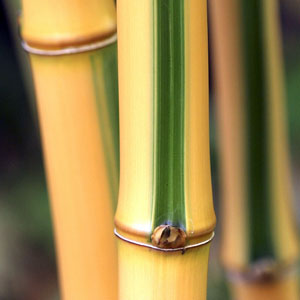 When it comes to the green revolution, there is no shortage of trends that just don’t add up—especially when it comes to the world of housing, construction and remodeling. Everyone’s so eager to jump on the eco-friendly bandwagon, they often make rash decisions that seem green on the surface, but in fact might be less than sustainable. A very common place to see this is when it comes to flooring options—specifically concerning the choice between bamboo or hardwood materials.
When it comes to the green revolution, there is no shortage of trends that just don’t add up—especially when it comes to the world of housing, construction and remodeling. Everyone’s so eager to jump on the eco-friendly bandwagon, they often make rash decisions that seem green on the surface, but in fact might be less than sustainable. A very common place to see this is when it comes to flooring options—specifically concerning the choice between bamboo or hardwood materials.
Bamboo
One reason bamboo is thought to be a “greener” option is because, technically a grass, bamboo plants take a fraction of the time to grow to maturity when compared to its hardwood competition.
Additionally, bamboo is often considered to be very biodegradable and more natural than hardwood floors that sometimes come with coatings or treatments. However, there are some environmental concerns that we will mention in a bit, but first, an overview of hardwood flooring.
Hardwood
Whether solid or engineered, hardwood flooring comes from wood—the difference lies in how much wood. Solid hardwood consists of one piece of wood, whereas engineered is comprised of 2 or more wood or plywood layers. Solid is the more traditional choice, but engineered is definitely gaining in popularity.
Solid hardwood loses a lot of environmentalists who fear that it takes too long to replenish the material’s original source – trees. Sure, trees are natural and can be regrown, but the problem is that they do not mature fast enough to keep up with the rising demand for hardwood flooring. While a lot of North American and European wood species that are popularly used for manufacture of hardwood flooring are obtained from sustainable forestries, careless and unsystematic cutting (i.e. of exotic wood species in tropical rainforests) can lead to deforestation and pose a danger to local environments and the planet. Thus, alternatives like bamboo have popped up; however, as you’ll see below, bamboo is not as green of a choice as you might think
Shipping
Hardwood floors outshine bamboo in “greenness” when one factors in the cost and pollution that come with shipping immense quantities of bamboo out of its natural environment into the West. Native to Asia, bamboo is harvested and shipped at alarming rates, and, unless only electric ships or planes are used to transport bamboo (doubtful) that means lots of fuel usage. Sure, you might be making a smart flooring choice, but you are still hurting the environment in the process, canceling out any good you may have been doing.
With traditional hardwood, on the other hand, there are plenty of domestic options, which means limited shipping distance and therefore less emissions, something Mother Nature no doubt appreciates.
Durability and Manufacturing Process
Although bamboo is technically a grass, it doesn’t mean that it’s soft and fragile. Depending on environmental factors, bamboo grass can grow and mature into a material that rivals the hardness of maple (and measuring up to 1650 on the Janka scale).
When it comes to the ease of manufacturing, however, bamboo floors clearly lose out to traditional hardwood. While solid hardwood planks consist of a single piece of wood, and engineered hardwood planks – of 2 or 3 pieces, bamboo flooring is made from numerous narrow strips that need to be glued together to form a solid flooring surface.
Most European and North American manufacturers use non-toxic water-based glues that are completely free from formaldehyde. One cannot say the same for mass produced bamboo flooring, where toxic glues and chemicals are often used in the bonding and stripping process. So, although bamboo may be an eco-friendly material initially, the final product is less than complimentary to our planet and our own health, as toxic glues will continue to emit harmful substances into the air.
Due to the sheer amount of glue required for bonding numerous narrow strips together, it is much cheaper to utilize lower quality, toxic glues. Although this may keep the cost of the floors down initially, the consequences of long-term exposure to toxic glue fumes and formaldehyde far exceed any initial advantages.
Labor and Production
The final way in which bamboo flooring is not as great of a flooring option as often thought is when it comes to manufacturer labor practices. In most cases, bamboo floors are manufactured in China, where labor practices and regulations are often less than humane. Workers are forced to work in horrid conditions all in the interest of the bottom line. But is the lower cost of bamboo flooring really worth it, when it means supporting less than admirable business practices?
Finally, many European or North American hardwood flooring manufacturers are certified by the Forest Stewardship Council and other programs that ensure that producers adhere to the strictest environmental, quality, and labor practices, something that can’t be said for most imported bamboo floors.
So, the next time you or another home builder or remodeler is considering what flooring option to choose, think twice, weigh all of the options, and research thoroughly. You might be surprised by what you find.
After years of DIY home improvement projects, Kristie Lewis became an official member of the construction industry as a project manager. She hung up her hard hat last year, but continues to share her knowledge and passion for construction through blogging. Informative and helpful, constructionmanagementdegree.org offers insight into the ever-evolving industry. Email Kristie your questions and comments at Kristie.lewis81@gmail.com.



